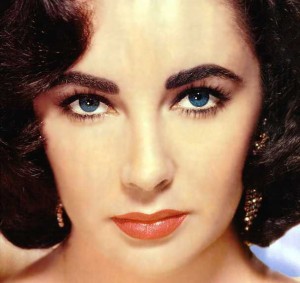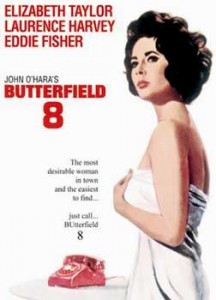 It is hard to precisely pin down who Elizabeth Taylor was. She was a good actor who could often be a great actor (check her Oscar-winning performance in Who’s Afraid Of Virginia Woolf? to confirm this) but could easily find herself in wildly overblown surroundings (like Joseph Mankiewicz’s Cleopatra). She was known for her craft, but equally known for her many marriages, and had a reputation as a man-collector. Of her many performances, almost none come to mind that were straight-up comedy without help from IMDB (where you find Father of the Bride and Father’s Little Dividend). She seemed to have found her humor later in life, but the laughs were mostly geared toward sending up her personality and foibles, and not from a particular role she was playing.
It is hard to precisely pin down who Elizabeth Taylor was. She was a good actor who could often be a great actor (check her Oscar-winning performance in Who’s Afraid Of Virginia Woolf? to confirm this) but could easily find herself in wildly overblown surroundings (like Joseph Mankiewicz’s Cleopatra). She was known for her craft, but equally known for her many marriages, and had a reputation as a man-collector. Of her many performances, almost none come to mind that were straight-up comedy without help from IMDB (where you find Father of the Bride and Father’s Little Dividend). She seemed to have found her humor later in life, but the laughs were mostly geared toward sending up her personality and foibles, and not from a particular role she was playing.
For many, she’ll be remembered for her perfume White Diamonds, and the bizarre commercial that advertised it. She’ll be remembered for a cameo on The Simpsons, and just as likely her improbable friendship with Michael Jackson. More impressively, she’ll be remembered for championing the cause of HIV/AIDS Research during a period of time when Hollywood was actively denying its existence, long before denial became impossible.
 She was born in England to American parents. When the second world war started kicking up in 1939, the family left. That was when she was seven. She made her film debut three years later in There’s One Born Every Minute.
She was born in England to American parents. When the second world war started kicking up in 1939, the family left. That was when she was seven. She made her film debut three years later in There’s One Born Every Minute.
Among her roles of note were National Velvet (1944), Life With Father (1947), and James Dean’s final picture Giant in 1956. While recognized for talent, her acclaim tended to focus more on her physical beauty, so the idea of her taking on the role of Maggie in Tennessee Williams’ Cat on a Hot Tin Roof alongside Paul Newman in 1958 seemed like a gamble. Ultimately it paid off and allowed her to later take on the Oscar-winning role of Gloria Wandrous in 1960’s BUtterfield 8. She would go even farther off-track with her incendiary performance as the manhood-battering Martha in Who’s Afraid of Virginia Woolf? opposite the man she often referred to as the love of her life, Richard Burton.
Taylor represented one of the last of Big Hollywood’s cornerstones. She was just as famous as any role she played, and most often more famous. She was never typed as one of her characters except, perhaps, as the character of Elizabeth Taylor herself.





Comments